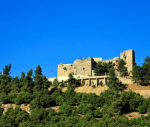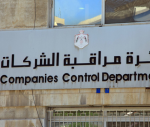You are here
Teachers’ strike: A reality check
Sep 28,2019 - Last updated at Sep 28,2019
Teachers have produced a compelling “justice narrative” to frame their strike campaign. At the level of the Jordan Teachers Association (JTA), the adherence of teachers to the strike and its message reflects an extremely disciplined, well-organised and committed body of JTA members. At the national level, it is this narrative that makes nearly three quarters of those who support the strike attribute their support to “teachers’ difficult economic conditions”, according to a two-wave nationally representative tracking poll of 2,516 adult Jordanians published last week by NAMA Strategic Intelligence Solutions that covered the strike between September 9 and 19.
Since the early 1990s, the conventional social contract has been changing and inequalities have been increasing despite the growth of the nation’s GDP to the highest levels since the inception of the Kingdom. These inequalities are practically symbolised by the teachers’ strike today.
In 1999, when Jordanians were asked in polls about the extent to which justice exists in Jordan on a four-point scale (to a great extent, to a medium extent, to a little extent, or justice does not exist at all), 8 per cent said “justice doesn’t exist at all in Jordan”. This increased to 23 per cent in 2018. Over the same period of time the percentage of people saying “justice exists to a great extent in Jordan” has decreased from 30 per cent to 10 per cent. This may partially explain why 41 per cent of Jordanians support the strike despite its “impact on students and their families”. The latter is the most important reason for those who oppose the strike, as 60 per cent of them cited this reason.
Changes in support and opposition to the teachers’ pay raise and strike, don’t change the fact that socio-economic inequalities are increasing, especially when comparing governorates. Although 56 per cent, on average, oppose the strike. The poll shows that opposition has increased from 55 per cent on September 9, to 69 per cent on Thursday, September 19 while support has decreased from 42 per cent to 29 per cent over the same period.
Support for the teachers’ pay raise and the strike is highest in the poor south which is made up of the governorates of Karak, Tafileh, Maan and Aqaba. As a region, the south has been showing all signs of distress over the past three decades. Similar signs are present in Madaba which is counted as part of the centre (Amman, Zarqa and Balqa) although its indicators are close to or worse than the south. The latest such indicator is Department of Statistics data from Madaba registering the highest unemployment rate among Jordan’s governorates.
According to a recent report by the UNDP, “The overall inequality measure remains little affected by the urban/rural divide, but differences between governorates account for 8 per cent of total inequality. Income inequality is higher when measured with income than with consumption. Furthermore, social transfers buffer income inequality by bringing down income inequality measures by four percentage points.”
This mix of data may either upset or please the JTA and GoJ. But it shows that there is a societal split in Jordan over the issue, as 60 per cent support teachers’ pay raise, but as the strike goes on, GoJ loses more credibility and teachers lose more support. Ultimately, we are all losing because our public policies have not been “good enough” to address our growing socio-economic injustices and inequalities which are gradually depleting state credibility as over two decades of accumulative polling data on evaluation of government performance clearly demonstrates.
The writer is Chairman of NAMA Strategic Intelligence Solutions













